It was a call from my good friend and fellow storyboard artist, Jeff Norwell. Jeff and I had met on the first day of art college. Ten years later, our careers running very much along a similar path, we remained in close contact - even working occasionally on the same projects. Jeff had moved from an in-house job at McCann to "freelance-in-residence" at FCB, and more recently to 63A Yorkville Ave., the studio space shared by Will Davies...
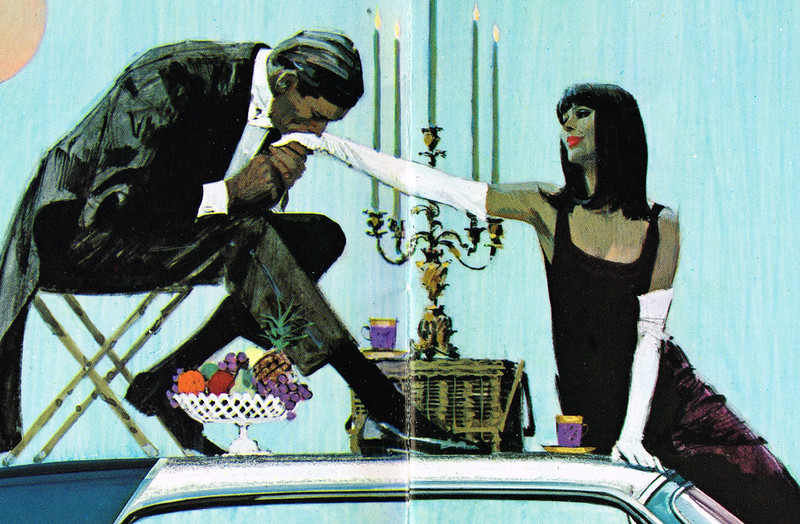
... Tom McNeely...
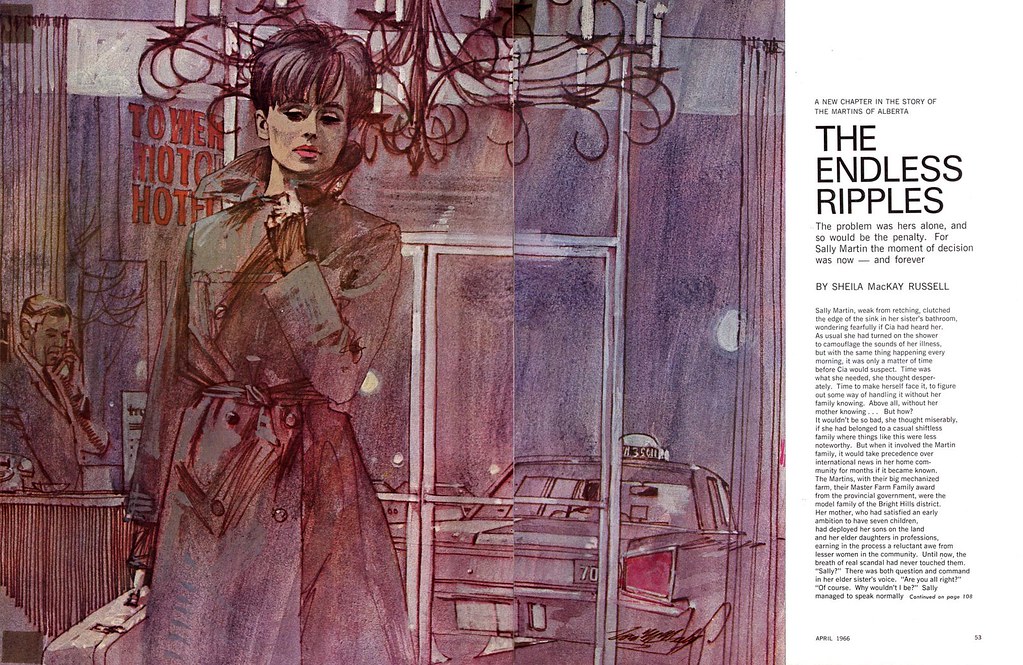
... and Roger Hill...
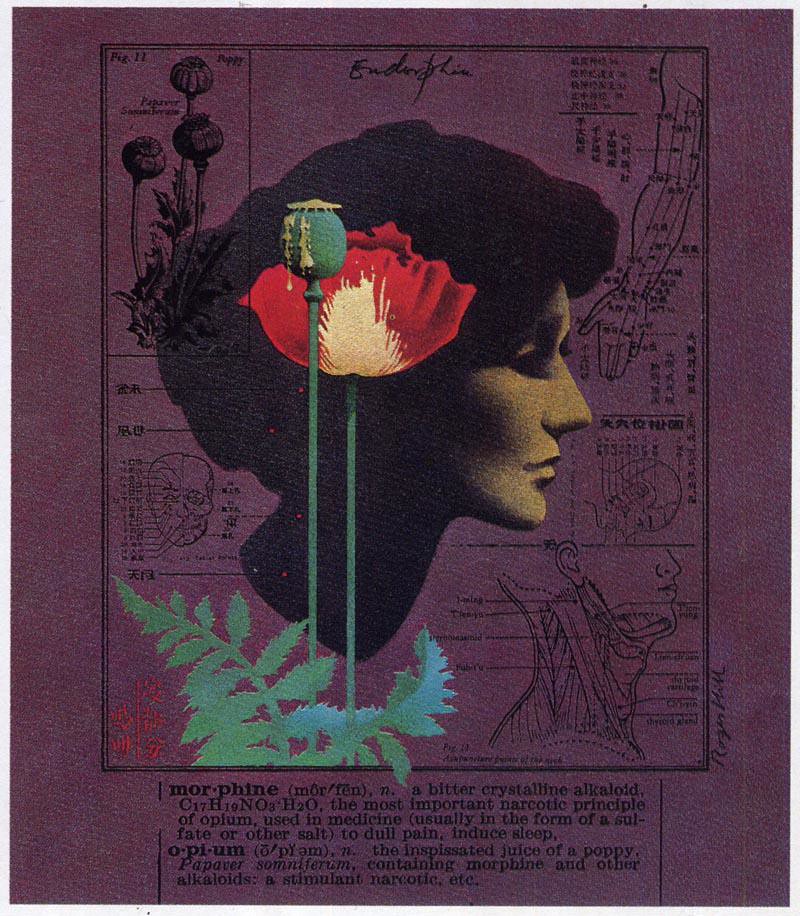
... three of the biggest names in Canadian illustration at that time, as well as Vince McIndoe another very successful illustrator closer to our age.
I'd had my own freelance arrangement at Ogilvy for just over a decade at that point. Anybody who's ever worked in a high-pressure, fast-paced team environment like a commercial art studio can tell you; you spend so much time with the people there - sometimes more than than you do with your actual family - the studio becomes a second home. My friends and co-workers at Ogilvy were like a second family. The thought of leaving them and that place - making such a momentous decision on the turn of a dime - was heart-wrenching.
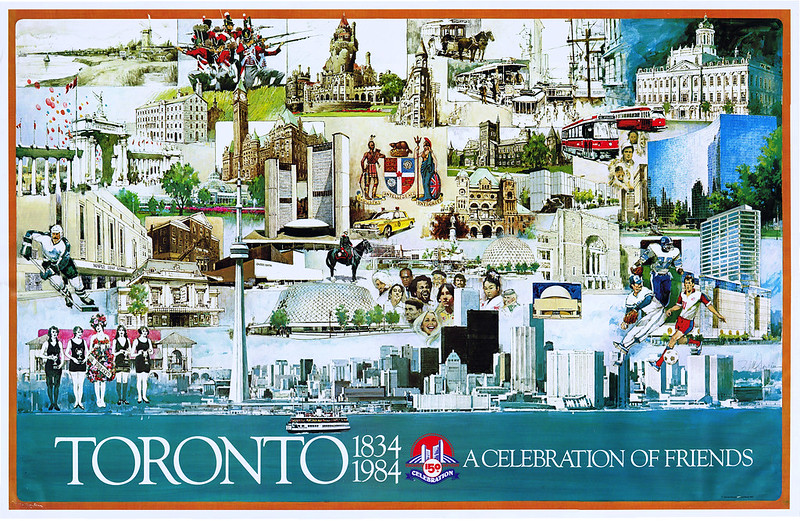
On the other hand, how often in an artist's lifetime does an opportunity to be in close proximity to the greatest living illustrators of a generation come along? For most of us, perhaps never. So when it does, how can you say no?
And just like that, I jumped off the cliff: "I'll take it." I said.
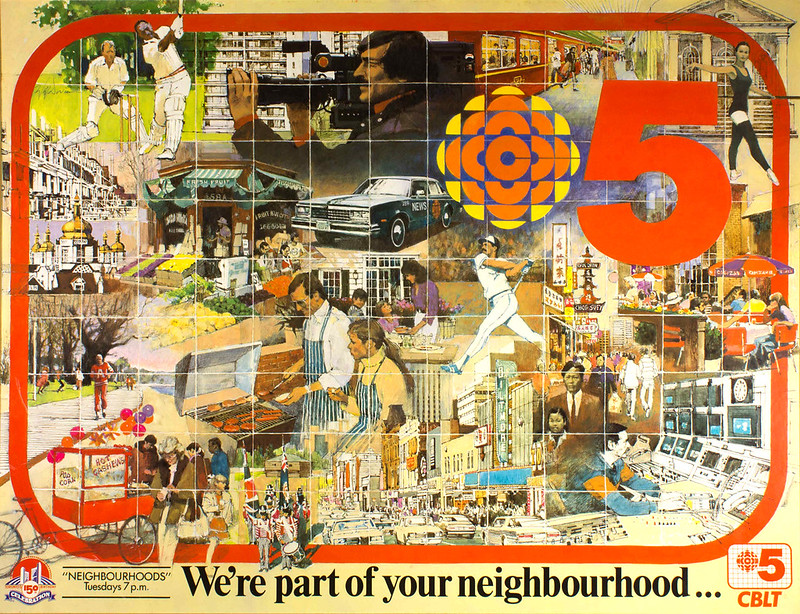
When I arrived at 63A, aside from Jeff and myself, everyone's doors were shut. That quiet I spoke of in my last post really pervaded the atmosphere. Coming from a noisy, bustling environment like the studio at Ogilvy where no doors ever seemed to be shut, it was a big change. Dropping in and hanging out for a chat and a coffee while working on an assignment was part of the culture. At 63A those closed doors and the general quiet atmosphere of the place seemed to stress that people wanted their privacy. It reinforced something I'd sensed time and again among the older generation of illustrators: that each artist had secrets - a certain technique, a connection with certain clients - and that those things should be cautiously guarded. I don't mean to suggest the other artists at 63A were unfriendly (although Roger was kind of intimidating at first) but socializing happened when people went out for lunch - not in the studio.
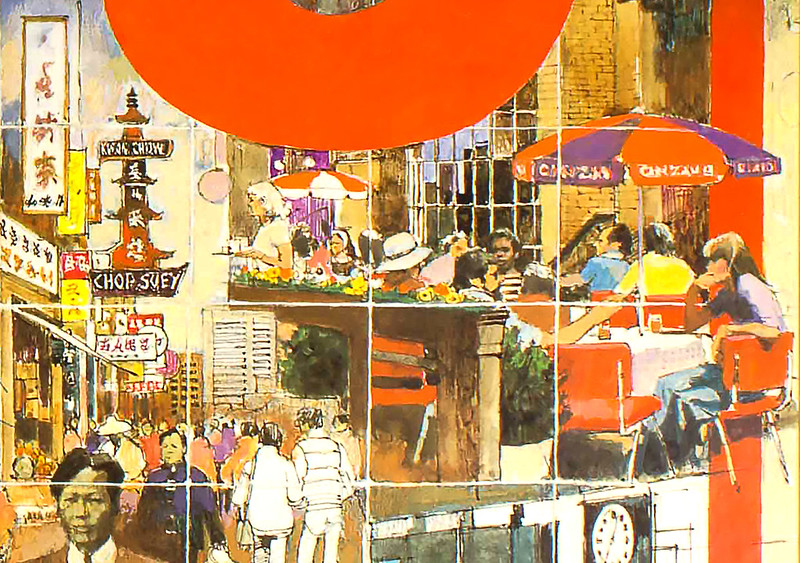
But over time Jeff and I managed to bring the other guys out of their shells. Dropping in and sharing stories, observing each other at work and learning from each other became common practice, much to everyone's benefit and enjoyment, I think.
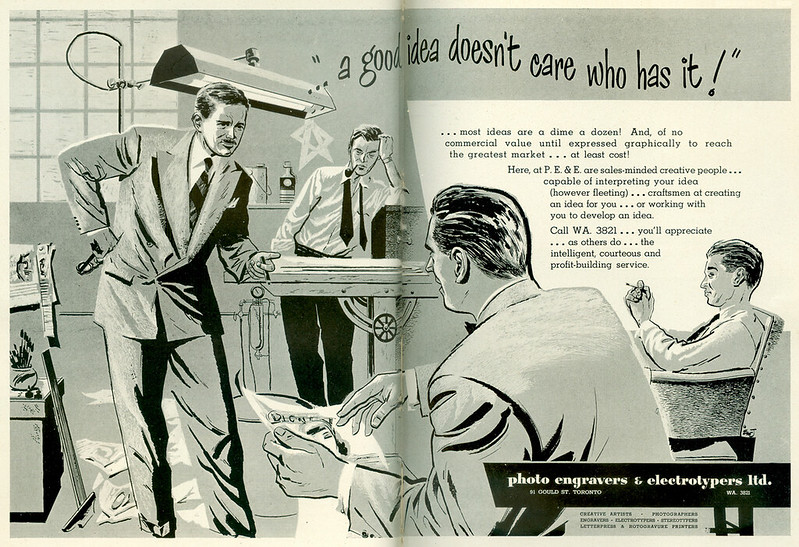
(An ad for Photo Engravers, by an unknown illustrator from the 1949 Toronto AD Annual. PE is where Will found his first job after art college c. 1946)
And it was as a result of that greater camaraderie that I really came to know and appreciate Will Davies as a person as well as an iconic figure. At lunch or on a visit in my or Jeff's studio, Will would share wonderful stories of the good ol' days. When I would pull out folders of old magazine clippings by the likes of Al Parker or Coby Whitmore, Will would recall for us his trips to New York in the early '50s, his visit to Al Parker's house and to the Charles E. Cooper studio, where he had hoped to land a job. Over time Will became a friend.
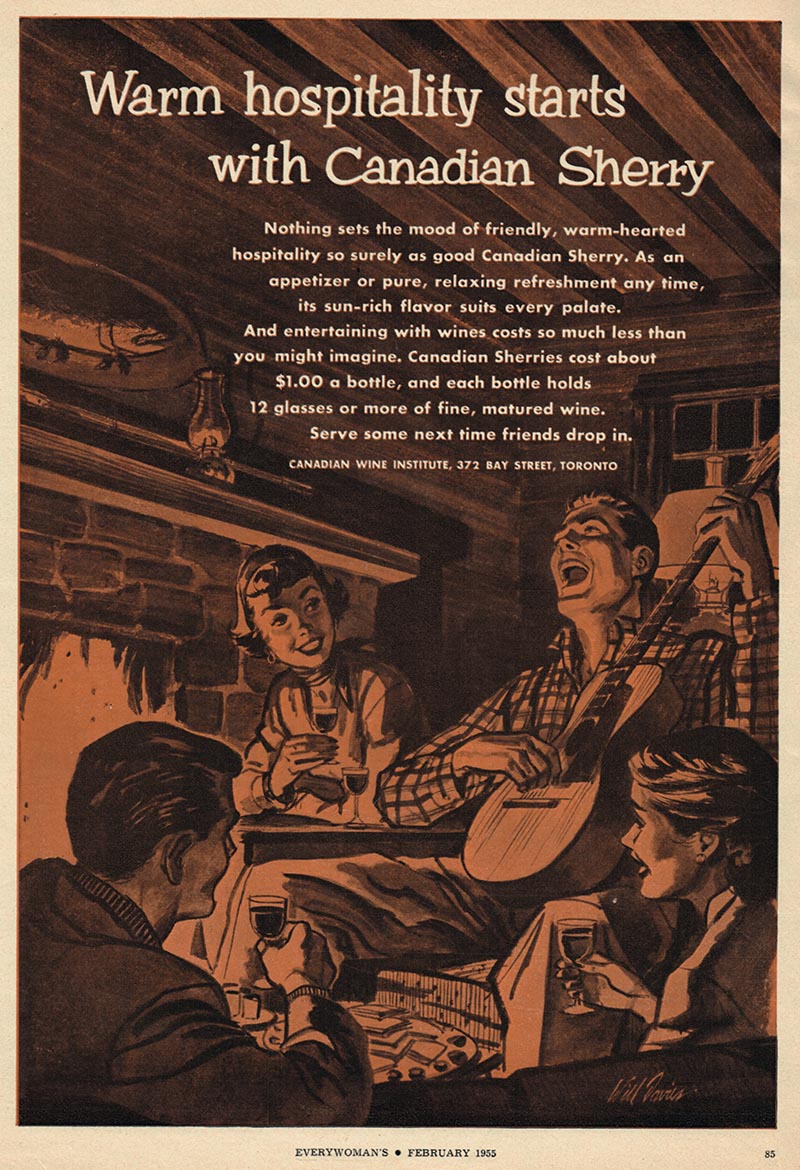
When I'd come back from a used book store with a stack of old Maclean's or Chatelaine magazines, we'd all flip through them together... Will and Tom stopping at pages displaying work by Oscar Cahen ("He was a genius") or Jack Bush ("Oh, I remember Jack!") and launch into a story about working for the magazines and ad agencies of the day, and what the business had been like in the era of the big art studios like ADS, TDF, or Sherman, Laws.
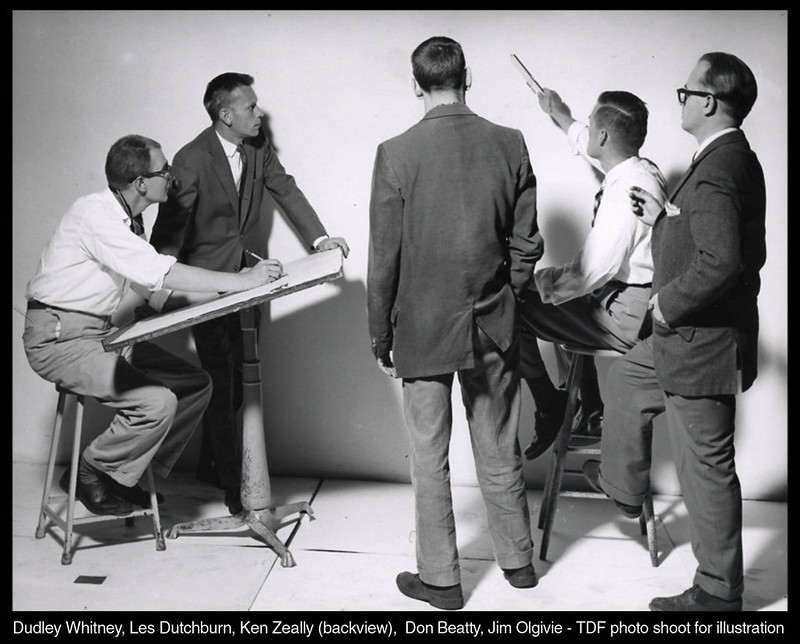
Most wonderful of all were the occasions when Will would drop in while I was working on a job, inking a pencil sketch of some cartoon character or another. He's watch quietly as my brush swept along a curve and remark, "Boy, I just don't know how you do it. I could never do that." Can you imagine? The Will Davies graciously paying me a compliment, humbly suggesting he couldn't do what I did! Of course he could do what I did... Will Davies could do anything! But it was a kindness he regularly offered me when he didn't have to, and it always made my day to hear him say it.
At a certain point, when I had some down time, I decided to try my hand at painting gouache pin-up girls in the style of the great '50s Esquire artist, Mike Ludlow. Will was very helpful, checking in on me and offering tips on how to handle the paint. He was always encouraging - never critical. I learned a lot from Will Davies... and I was not alone.
Next time I'll share a bit about Will Davies' teaching career.
* If you're interested in acquiring a copy of The Art of Will Davies, please visit our Kickstarter page.









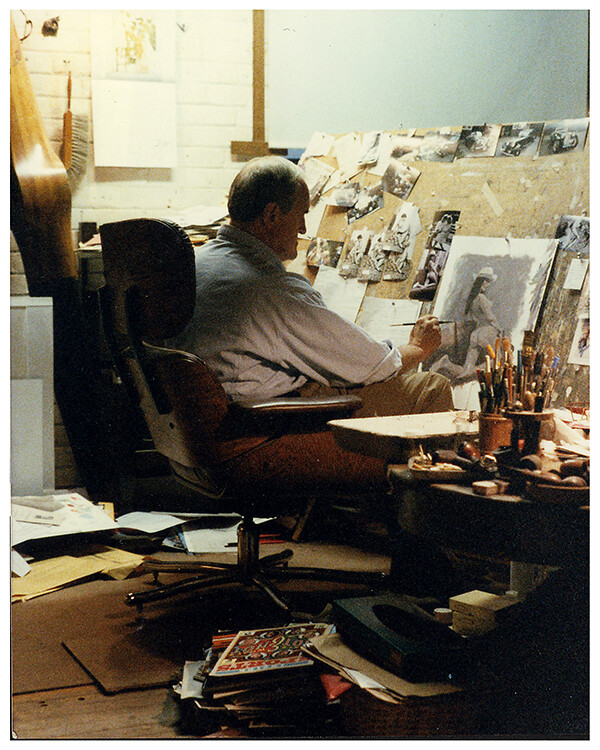
Post a Comment